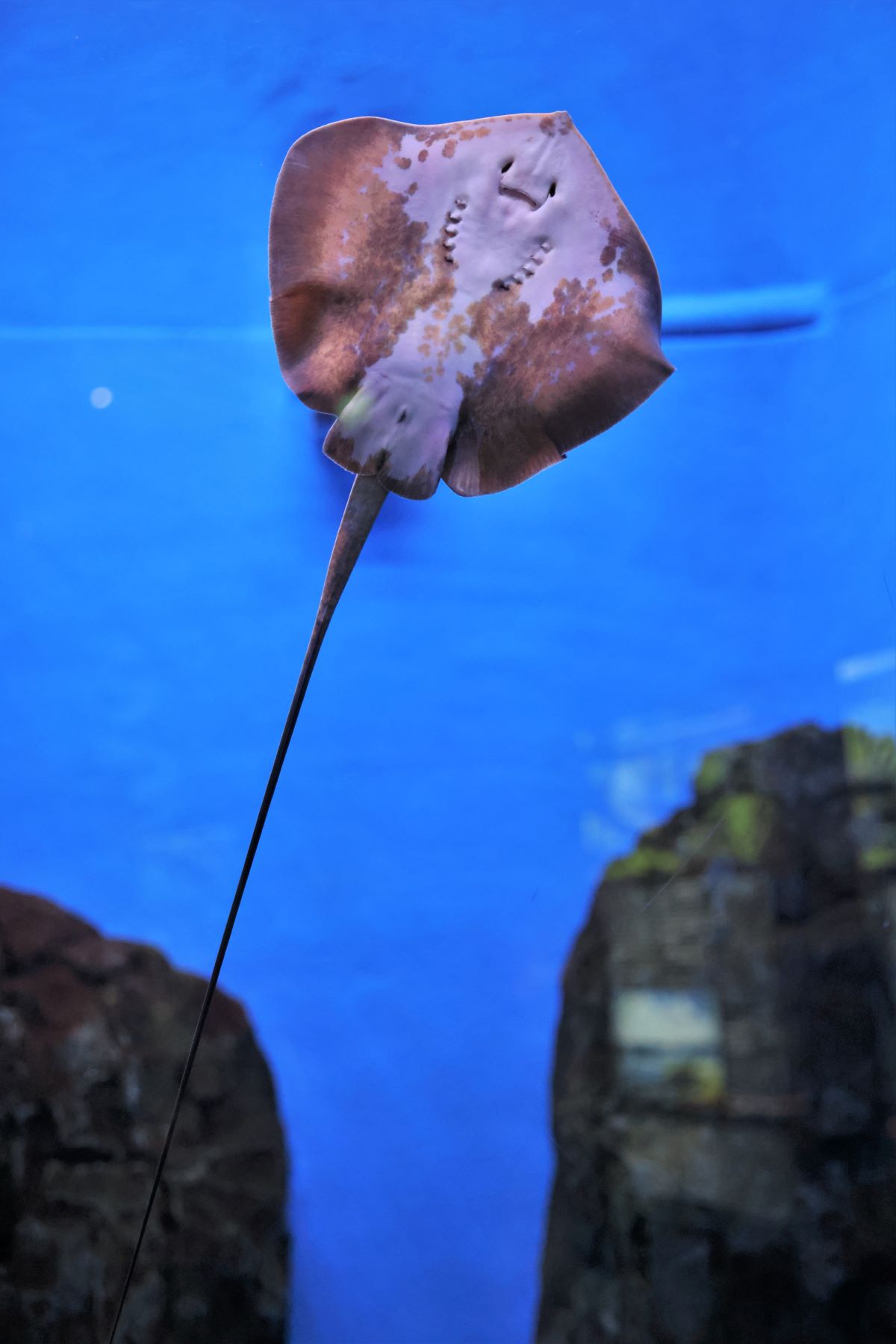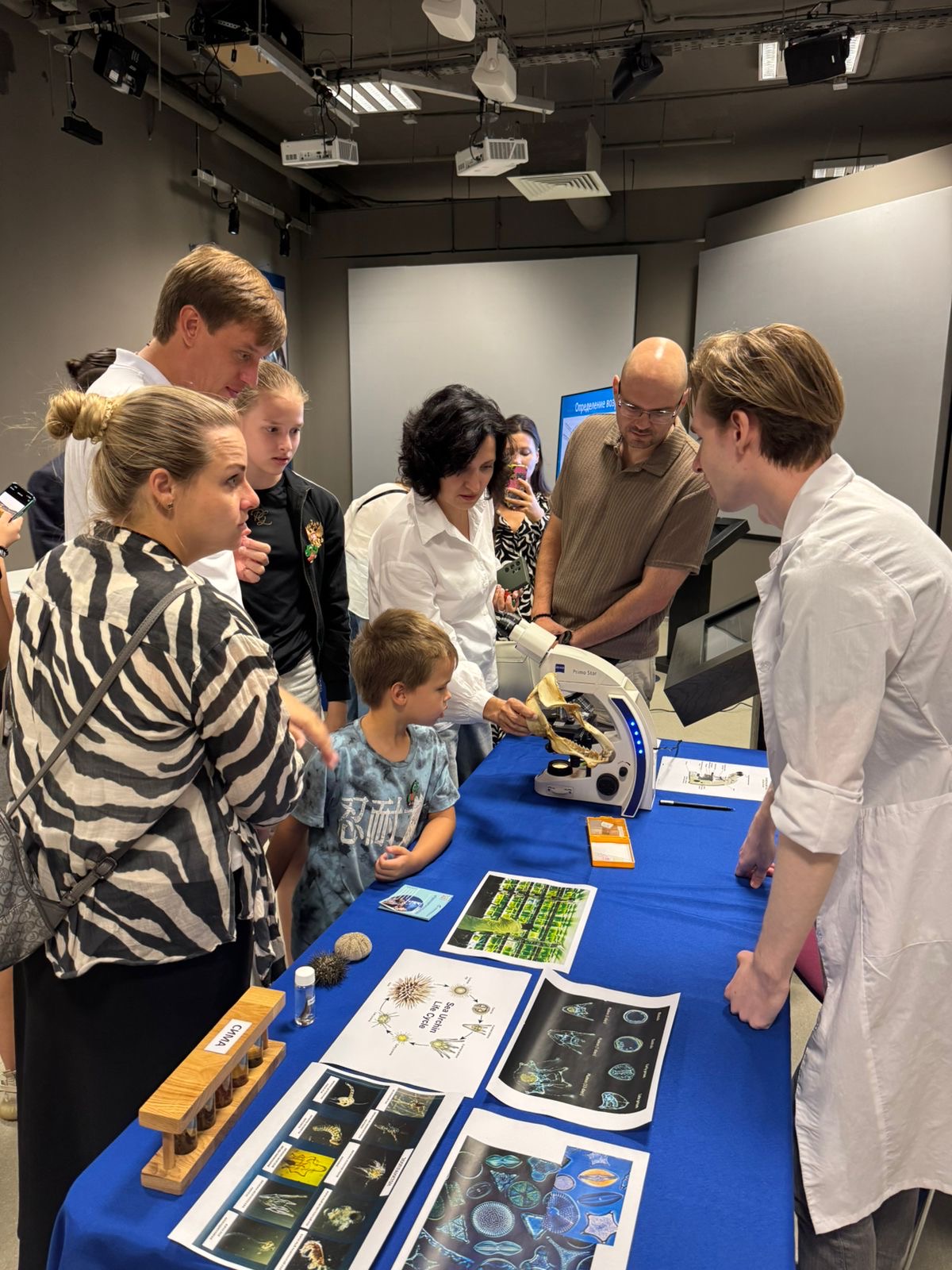Fish microchipping, or PIT tagging, is a modern technology involving the implantation under the skin of a small, bio-compatible chip with an embedded unique 15-digit code number. A PIT tag is a rice grain-sized sterilized capsule with a microchip containing a coil inductor and an integrated circuit. The tag is inserted using a syringe. Several days ago, a catfish and a sturgeon got their individual numbers via a microchip. Now it is the turn of three more sturgeon and a young zebra bullhead shark. Why chipping? Is it for all the Aquarium fish? Principal Fish Pathologist of the Collection Management Division Maria Popova answers our questions.
Mariia Iurievna, how have you made a decision to tag the fish?
First of all, this procedure helps us to identify each fish and to avoid inbreeding. We can tell mothers from daughters and fathers from sons now. Last year, the Government of the Russian Federation adopted a decree requiring to tag all aquaculture animals before March 1, 2026. Though our animals do not fall under this law, we’ve decided to conduct mass microchipping because it makes fish identification and inventory management so much easier.
What kind of equipment is needed for the procedure?
First of all, we’ve purchased the instruments, a hand-held PIT tag reader and syringes. The latter are very handy as each syringe is pre-loaded with a PIT tag. The tag, or chip, has a special coating, which is antimicrobial and holds the chip in place preventing its travelling through the body. After chipping, the PIT reader is applied to ensure the chip can be read where it is positioned. If the chip is detected, the reader will make a sound. Then, the individual number of each animal is recorded in the electronic logbook. The only problem I can see here is that the chip may be squeezed out as the fish and its muscles grow. But time will tell.

How do fish react to microchipping?
You have seen for yourself that the procedure lasts a few seconds, the needle is quite thin, and the chip is implanted subcutaneously. Therefore, it is practically painless for the animal, and the only problem is to fix the fish well when out of the water.
How long do you keep monitoring the newly chipped animals?
We haven’t got any protocols on the after-chipping care. Anyway, we conduct fish health rounds daily.
Are you going to conduct mass microchipping at the Aquarium step by step or simultaneously for all fish?
First, we are going to chip and register newborns to enter them into the Aquarium's logbooks. This information is also important in responding to requests from regulatory authorities. Next in line is the broodstock, mature individuals used for breeding purposes. And finally, as new fish arrive, we plan to chip the most valuable specimens to simplify accounting. The procedure is also necessary for the fish we move or donate. Let’s take, for example, the kaluga sturgeon that were donated to the Aniui Hatchery in June this year. If the fish had been tagged at that time, it would have made the paperwork much simpler.





